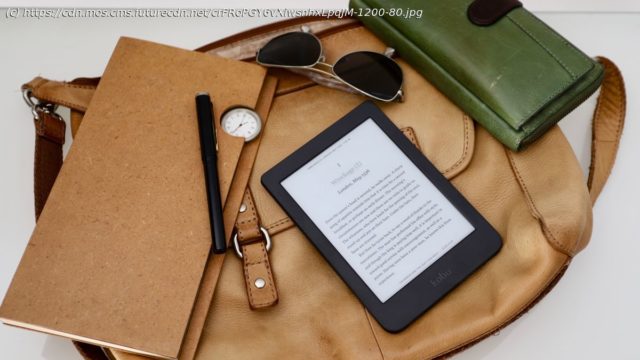Kobo has expanded its ereader range with a new entry-level model, but is the Nia a match for Amazon’s basic Kindle?
The Kobo Nia is a no-frills ereader aimed at those who want a Kindle alternative. It’s marginally more expensive than the current 10th-generation Amazon Kindle, but the Nia boasts a better 6-inch 212ppi screen.
However, there doesn’t seem to be anything new about Kobo’s latest entry-level ereader. In fact it appears to be physically identical to the Tolino Page 2 (which was released in 2019 and is only available in some markets). This shouldn’t be very surprising as Rakuten, the makers of the Kobo range, bought Tolina back in 2017.
The Nia also shares plenty of similarities with the now-discontinued Kobo Aura, the company’s previous entry-level ereader. They both have the same screen resolution of 1024×758 and screen size of six inches. The display advantage the Nia has over its older sibling is that it uses the latest E Ink Carta technology that makes the screen more responsive and sharper than the Aura. The screen resolution is also a boost over the current Amazon Kindle (2019) model, whose 6-inch E Ink display is just 167ppi.
But where the Kobo Aura had just 4GB of internal memory, the new Nia boasts 8GB of storage, putting it on par with the rest of the current Kobo ereaders, like the Clara HD, Aura One, Libra H2O and Forma. However, the Aura had a microSD slot to expand storage, which is not an option on any current Kobo or Amazon device.
Thanks to a newer processor (1GHz i. MX 6 CPU) and a more streamlined interface than before, the Nia is definitely a far superior ereader to what the Aura was, and can give the Kindle a run for its money.
Alongside a shared screen size, both the Nia and the Kindle lack waterproofing, and both boast front-lit displays. Kobo’s patented ComfortLight technology makes its way to the Nia, meaning you can easily adjust the brightness of the front light by just swiping up or down the left edge of the screen for a more comfortable reading experience at night. However, unlike the Clara HD and the more premium Kobo ereaders, there’s no blue-light filter on the Nia (or the Kindle), meaning the hue of the light cannot be adjusted to warmer tones at night.
Like all other Kobo ereaders, the Nia comes with OverDrive support in many countries, so borrowing ebooks from a public library is seamless. And you can switch from reading on the device to the Kobo app on your smartphone or tablet (in case you’ve left the house without your ereader) without losing your place.
The Nia might not have Bluetooth like the Kindle (used for the VoiceView feature, a text-to-speech screen reader, as well as for audiobooks), but it offers wider file support and the ability to sideload different fonts, including Amazon’s own Bookerly or Ember. We’re also a little partial to Kobo’s more streamlined interface.
All in all, Kobo’s new Nia is a very compelling alternative to the Kindle, particularly for anyone who’s not keen on getting locked into Amazon’s ecosystem.
Compared to Amazon’s Kindle range, Kobo’s ereaders have always been a tad more expensive and the Nia is no exception. At $99.99 / £89.99 / AU$149.95 / €99.99 apiece (with the sleep cover sold separately), the Kobo Nia is quite affordable, although you can get the latest generation Kindle for just $89.99 / £69.99 / AU$139.
However, the Kobo Clara HD, which boasts a higher resolution 300ppi 6-inch screen and a blue-light filter, costs a little more – available for $129 / £109 / AU$179 – and does seem to be the obvious choice if you’ve got the extra cash.






